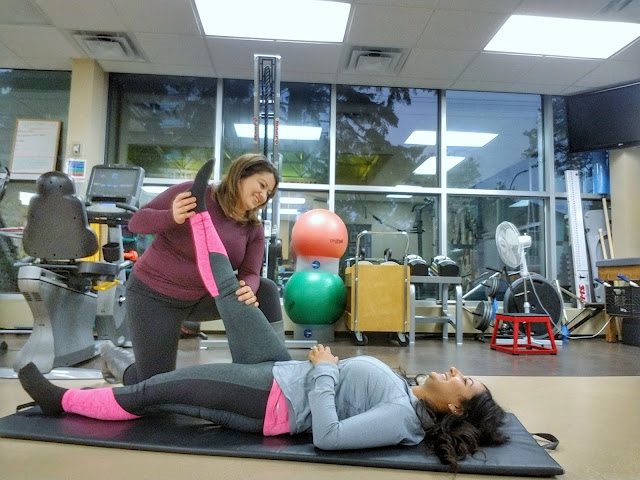I am really excited to share this blog series with you! My friend, Megan is an Athletic Therapist and is rocking it in her profession! The goal of our series is to help patients understand more about what we both do and how a Athletic Therapy and Chiropractic care can work together. Let’s start off the series with a quick introduction!
Hi! My name is Megan Pomarensky! I’m heading into my 5th year of private practice as an Athletic Therapist, and work part-time running my own business, Empowerment Rehabilitation and Training (@empowerment.rehab) and part-time at United Therapies. I’m also a certified vinyasa yoga instructor, and certified strength coach. You can find out more about my professional life at www.mp-athletictherapy.com. I’m really passionate about developing an evidence-based practice, which is why I’m back in school working on a Master’s degree in Rehabilitation Science. Outside of all that, I love yoga, reading, deadlifting, hugs, the beach, learning, pumpkin spice and gingerbread, and bonfires.
So, you’ve got some aches and pains, or maybe your body just isn’t allowing you do to do everything you want to do in life. And someone out there suggested you see an athletic therapist…which sounds great…but what does that even mean?
Athletic Therapists are experts in assessment and rehabilitation of injuries and conditions of the muscular, skeletal, and nervous systems. Athletic Therapists follow the sports medicine model of care, and strive to use an active approach to get you moving again.
The scope of practice of a Certified Athletic Therapist is quite large. We can use hands-on therapy techniques, modalities (like muscle stimulation, ultrasound, TENS, etc), guide you through stretching and mobility exercises, strength and stability exercises, and reviewing movement patterns such as lifting in daily life, or squatting/lifting in the gym. We can also provide taping and bracing techniques, and work with orthotics or other assistive devices. AT’s are often also found on the sidelines of sporting events providing emergency first aid.
This in no way means that you have to be a “professional athlete” to benefit from seeing an AT. In their own way, everyone is an athlete, because we all bend, lift, twist, walk, run, climb and jump – just at varying degrees and levels. Basically – if you’re a living, breathing person, athletic therapy can be an option for you. The process will likely be different if you’re a weekend warrior vs. a professional athlete vs. someone who’s main physical activity is movements of daily living. BUT – the end goal will always be the same – return you to pre-injury level and beyond, with tools to minimize risk of re-injury and further damage.
Whether you’re experience a new or old injury, Athletic Therapists are certified (after a 4 year degree, 1200 practicum hours, and a National Certification Exam consisting of written and practical components) to help you get back on your feet as quickly and safely as possible!



Pingback: Athletic Therapy Series - Part 2 The Importance of Stretching By Megan Pomarensky - Chiro by Day